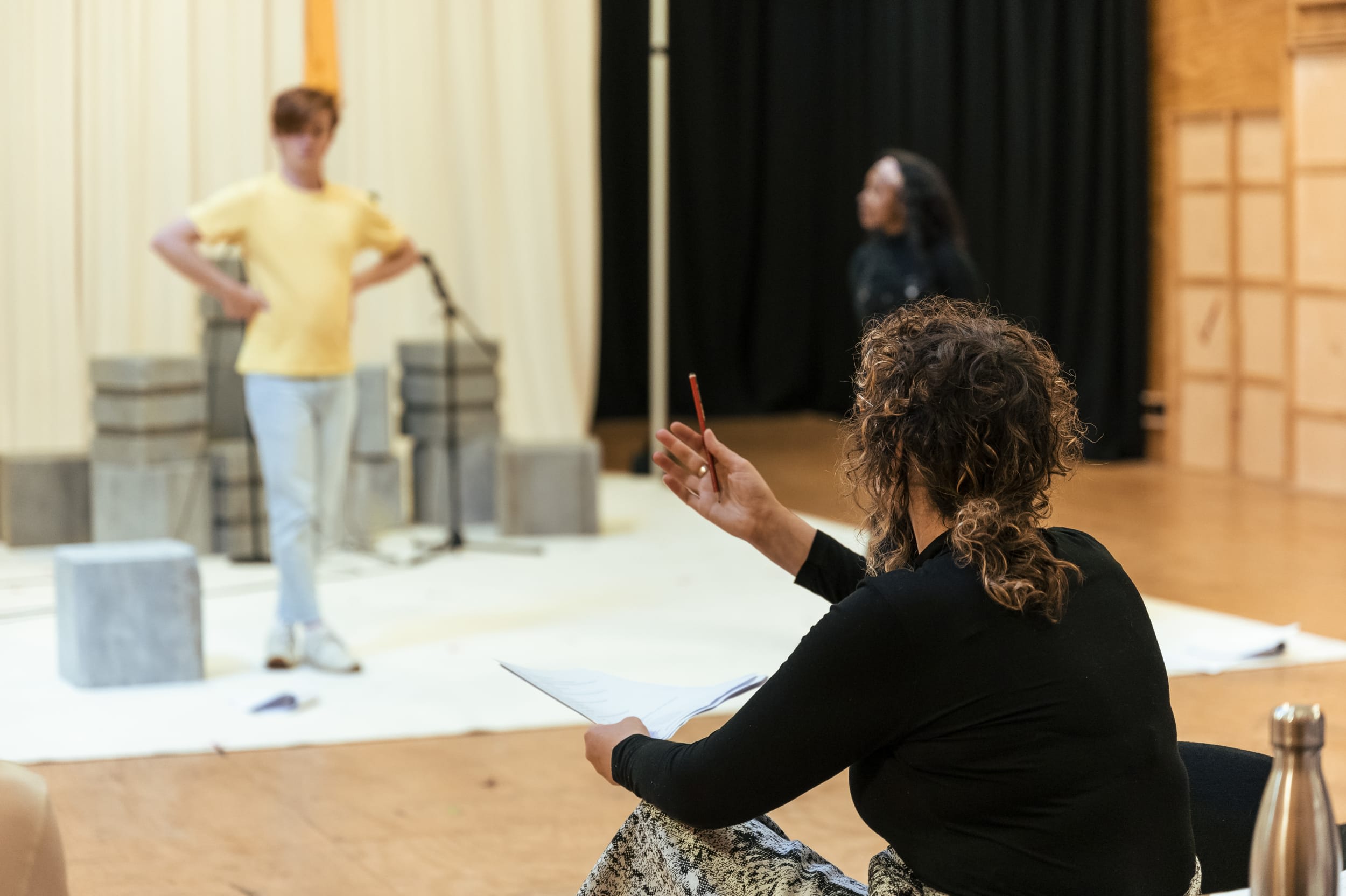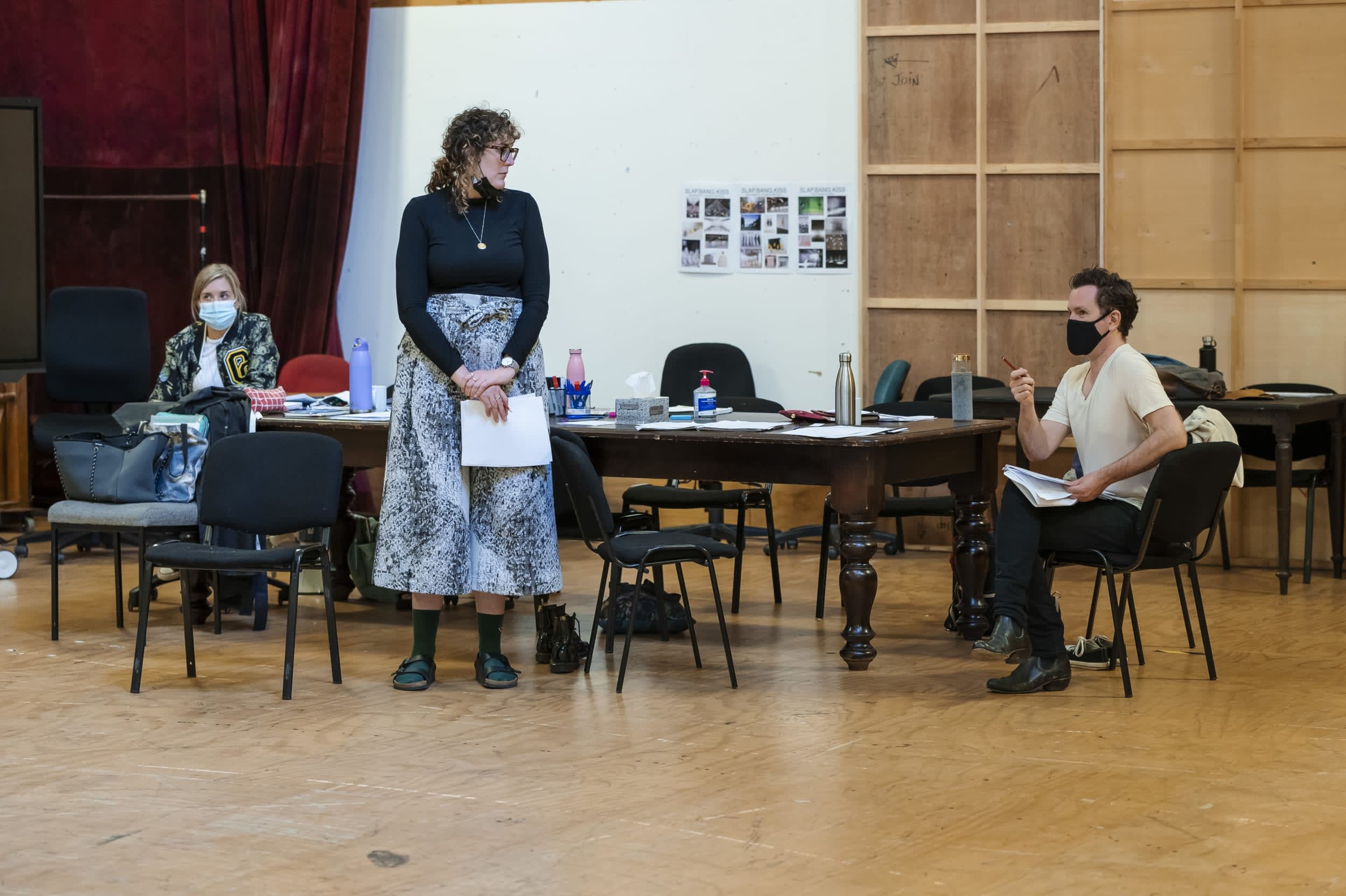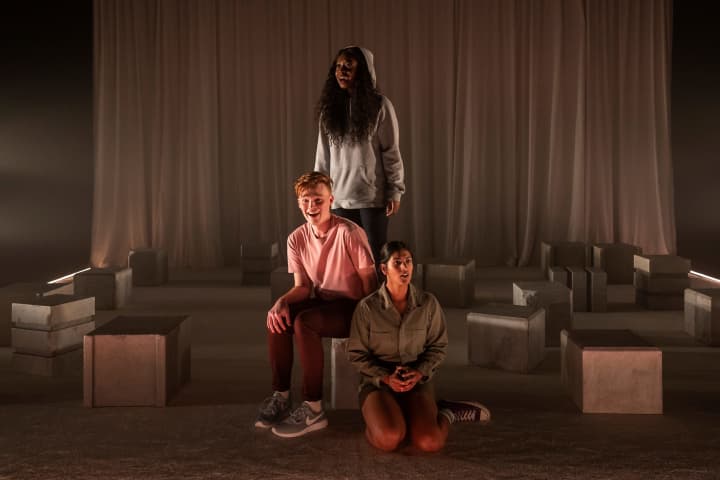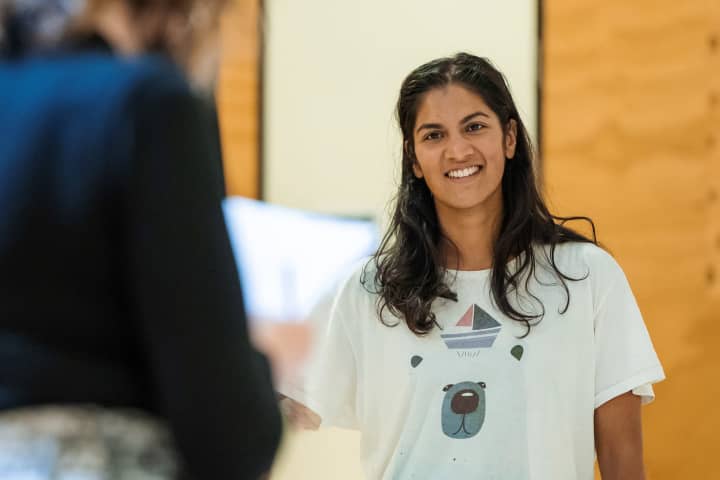Two years after its initial season was cancelled in 2020 due to the COVID-19 pandemic, SLAP. BANG. KISS. is finally making its way to the Lawler stage under the direction of Katy Maudlin. Here she reflects on the play's creative development at MTC HQ in February.
What is the world of this play, in your own words?
The world of this play is fluid; we flow through a range of times and a range of places. At the heart of the story are three young people: Immi, who lives in a place with curfews and peacekeepers, Sofia, a high school shooting survivor and Darby, who is setting out to break the world record of longest kiss in a regional Woolworths car park. These three stories are woven together, with the characters sparking movements and setting their worlds alight. As the play progresses, it expands, and we meet the people surrounding our three initial protagonists, the people who are joining and rallying around these movements. Finally, the protest is over, there is an abandoned megaphone sitting on the ground, and new characters emerge, asking if they should grab this opportunity and use their voice to affect change.
How would you describe the theatre style of this play, and how does that affect your directing choices?
SLAP. BANG. KISS. is a contemporary work that is pushing against more traditionally structured narratives. In total, the three actors play 38 characters. It is a fast-moving play, jumping from scene to scene quickly. Another interesting device that playwright Dan Giovannoni uses is the weaving between direct address and dialogue – he utilises these two modes of delivery quickly and seamlessly. This device helps us build big worlds quickly by adding information through monologue that we don't garner from the action. As a director, it is crucial to ensure the actors are playing to each mode, as each builds rhythm and story differently, which ultimately paves the way to the crescendo of the play.
What examples of motifs or symbols are emerging in your production?
At the heart of this play are young people affecting change. It begins with the characters in a private and isolated space, and as the play progresses, their worlds explode outwards and become more civic focused. Dan has done this with the text, and we also echo this with the design. Kate Davis creates several worlds, including the grid, which is very structured and pale; it can be restricting and feels very urban. There is the world of the publicness, which is a place of amplification and being heard – objects we use in this space are microphones and platforms. There is also the world of protest when the movement really begins to gather momentum – the significant objects in this act are these beautiful and bright flags. The many colours begin to transform the paleness of the set into a vibrant and saturated space. Lighting Designer Amelia Lever-Davidson also feeds into this visual expansion of the space.
 Katy Maudlin directs Conor Leach and Tsungirai Wachenuka during a creative development of the play. Photo: Tiffany Garvie
Katy Maudlin directs Conor Leach and Tsungirai Wachenuka during a creative development of the play. Photo: Tiffany Garvie
Are you consciously thinking about rhythm when directing this play?
This play is very rhythmic, both structurally and aurally. It is fast-paced, which means the moments of suspension are very potent. Composer and Sound Designer Ian Moorhead is supporting and helping push the rhythms of the work. This is very important in moments of transition and building to the story's apex. The play arrives at a place where hundreds of people are taking part in these particular events; the result is a heart-thumping cacophony. This is something I am acutely aware of creating with both the cast and the design.
How are you planning to use the space that Kate Davis has designed? What opportunities does it present?
We were so lucky to have the set in the room for the development. This gave the cast and creative team a chance to explore and play in a way you don’t often have the opportunity to. Also, from a director's perspective and building the production, it means an immediate opportunity to create images you know work by reducing variables that come when you are working with fill-in props or set pieces.
Each actor plays several characters – how do you plan to help them differentiate these characters?
Dan writes characters incredibly distinctively; each has a way of speaking that just sound like them. A great example of this is Jasmine – she is bubbly, intelligent and vivacious. The lines Dan has written are quintessentially Jasmine. The tricky thing is holding the trajectory and arc of each character. This allows the cast to land in a new character without hugely shifting their voice or physicality. Nevertheless, the actors in this play must work hard, as they are moving incredibly quickly between characters and worlds.
 Katy Maudlin with Vivienne Poznanski (creative development Stage Manager) and Ian Moorhead (Composer & Sound Designer). Photo: Tiffany Garvie
Katy Maudlin with Vivienne Poznanski (creative development Stage Manager) and Ian Moorhead (Composer & Sound Designer). Photo: Tiffany Garvie
What is an example of an activity you used with the cast in the creative development week?
We did a lot of reverse engineering in the development week. An example of this was asking the cast to build three monuments out of the set pieces – the blocks and flags. Collectively, with everyone in the room, we decided which shape worked best and built the first major transition. We had the beginning and final shape of the set, so it was about putting the flesh on the bones. We did this through a physical improvisation as the transition relies on the cast reimagining the space by moving the blocks from the gird shape into our decided monument image.
At this stage in the process, how are you collaborating with the other creatives, including the playwright?
All the creatives were present at some stage throughout the development. I structured the week focusing on the script for the first half of the week and more practical floor work for the second half. We forensically analysed the text during the table work and broke it up into beats, highlighting key events. Having the playwright there meant we could unpack moments with him and ask questions about the story or character. Dan made edits for logic or flow throughout this time, often because of discoveries made in the script work. Working with the design was more practical. Kate gave us an induction to the design elements at the start of the week, and we had a first draft for introducing the flags for her and Amelia Lever-Davidson to watch by the end of the week. Ian Moorhead was there regularly and inputting compositions into the work we were doing on the floor. The play has a very constant score, and having those compositions available to play with during development was a gift.
SLAP. BANG. KISS. is on stage at Southbank Theatre, the Lawler 19–30 April before embarking on a regional tour. Learn more.
Published on 23 March 2022





